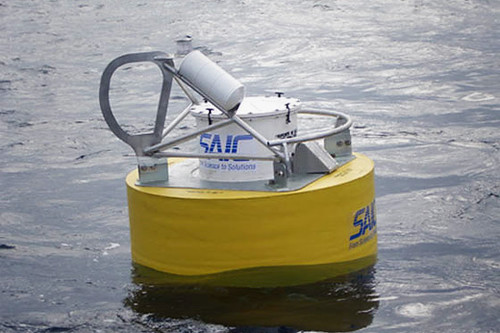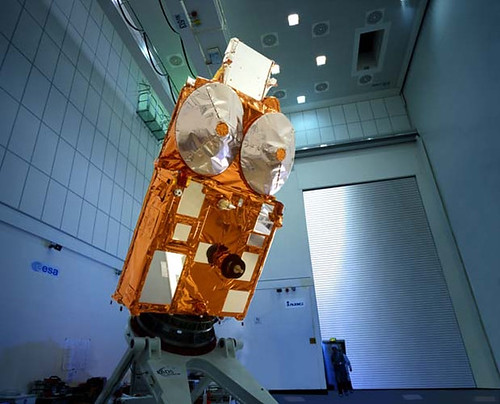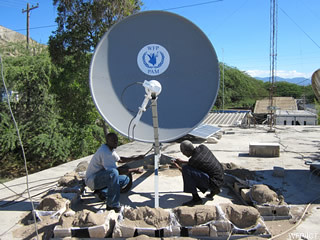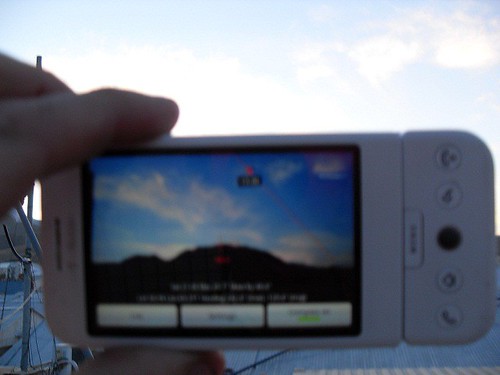Satellite Industry News Bits March 12, 2010
Saturday, March 13th, 2010
Federal court upholds regulations that require cable TV companies to make sports programming and other channels they own available on equal terms to rival TV providers such as satellite companies.
[Reuters – 03/12/2010]
The U.S. Navy says launch of next-generation MUOS communications satellites will be delayed until September 2011; military space officials search for options deal with gap in critical tactical mobile communications.
[Spaceflight Now – 03/12/2010]
CapRock Government Solutions expands coverage on its pre-packaged satellite subscription service, CommandAccess™, with the finalization of its commercial X-band network with military-grade features for secure voice, video, and data communications.
[Satellite Today – 03/12/2010]
Goonhilly in the UK, once the largest teleport in the world with over 60 operational antennas, will close visitor center for an unspecified length of time, according to BBC.
[BBC News – 03/11/2010]
Globalstar, Inc. receives a substantial order for the initial delivery of more than 15,000 SPOT Satellite Communicators from DeLorme.
[CNN Money – 03/11/2010]
A coalition of cable and satellite companies ask the FCC to mandate that disputes with broadcasters be settled by arbitration, to prevent broadcasters from charging big fees for retransmission.
[USA Today – 03/10/2010]
SkyTerra adds data capability to its MSAT-G2 mobile satellite radio equipment with new software, expanding applications of SkyTerra’s mobile satellite equipment for government and enterprise customers.
[Market Watch – 03/10/2010]
Gilat Satellite Networks Ltd. and Orbit Technology Group announce integration of their products for Satellite Communications On-The-Move (SOTM) solutions to serve mobile requirements of a wide range of industries.
[CNN Money – 03/10/2010]
GE – Satlynx is re-named GE – Satcom, the final step for the company as they become a fully integrated GE business brand identity.
[SatNews – 03/08/2010]
SkyTerra announces the roll-out of its new radio software, developed by Hughes, that enables data capability on its MSAT-G2 mobile satellite radio equipment.
[Market Watch – 03/10/2010]
Starling Advanced Communications of Israel is introducing the StarPack, a single-case, fly-away antenna providing two-way, high-speed Ku broadband satellite communications from anywhere on earth.
[RF Globalnet – 03/10/2010]
Globecomm Systems announces the company’s subsidiary has received a $34 million-plus increase in a contract from a major U.S. Government prime contractor; the contract is valued at up to $127 million over four years.
[TMCnet – 03/09/2010]
A satellite radio company increases its subscriber uptake by getting its system installed in 60% of new cars, compared to 50% last year, and choosing the car models carefully to enhance the probability of car owners subscribing to the service.
[CNN Money – 03/09/2010]
SkyBitz® and Iridium announce a strategic partnership that will position Iridium as the first-ever provider of two-way global MSS for SkyBitz, integrating the SkyBitz Global Locating System (GLS) technology with the recently announced Iridium 9602 satellite data transceiver.
[CNN Money – 03/09/2010]
NASA launches interactive online Space Communication and Navigation (SCaN) simulation in an effort to excite young people about space and NASA’s missions.
[The Orange County Register – 03/09/2010]
The Ministry of Defence has extended a deal with EADS to use a fourth SkyNet satellite of EADS subsidiary Paradigm to provide communications and data to troops in the field. The total value of the deal is now £3.5 billion.
[Computer World UK – 03/09/2010]
Globecomm Systems Inc. acquires Carrier to Carrier Telecom BV and Evolution Communication Ltd. for
about $15 million in cash as it expands its geographic reach.
[Business Week – 03/08/2010]
The Navy has awarded Lockheed Martin Corp. a new $10.2 million task order through the Integrated Topside program to help develop advanced satellite communications systems for submarines.
[Defense Systems – 03/08/2010]
Harris receives a Navy deal worth $10.7 million for computer systems for naval frigate vessels using 1.3-meter satellite communications terminals that have 10-times the bandwidth currently available, and operate on both X- and Ku-band frequencies.
[Orlando Sentinel – 03/08/2010]
Two areas of the national broadband plan likely to cause controversey are its goal to provide 100 Mbps service provided to 100 million U.S. homes by 2020 and its effort to get broadcasters to give up 500 MHz of spectrum for the use of wireless providers.
[TMCnet – 03/08/2010]
The U.S Army may be signaling to have at its disposal a variety of applications, particularly for sending goods, managing supply and support troops with more rich features, perhaps video or large data file transfers. But will this be the end of military narrowband tracking and M2M services?
[NSR Report -"Scenarios in Asset Tracking and Situational Awareness " – March 2010]
WBMSAT PS – Satellite Communications Consulting Services
















